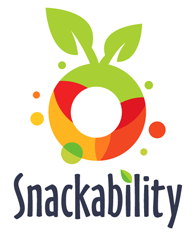1. Njike VY, Smith TM, Shuval O, Shuval K, Edshteyn I, Kalantari V, Yaroch AL. Snack Food, Satiety, and Weight. Adv Nutr. 2016; 7:866-878.
2. Piernas C, Popkin BM. Snacking increased among U.S. adults between 1977 and 2006. J Nutr. 2010; 140:325-32.
3. Dunford EK, Popkin BM. Disparities in Snacking Trends in US Adults over a 35 Year Period from 1977 to 2012. Nutrients. 2017; 9. <https://doi.org/10.3390/nu9080809>.
4. U.S. Department of Agriculture ARS. What We Eat in America, NHANES 2015-2016., 2018.
5. Fabián C, Pagán I, Ríos JL, Betancourt J, Cruz SY, González AM, Palacios C, González MJ, Rivera-Soto WT. Dietary patterns and their association with sociodemographic characteristics and perceived academic stress of college students in Puerto Rico. P R Health Sci J. 2013; 32:36-43.
6. Harris JL, Hyary M, Schwartz MB. Effects of Offering Look-Alike Products as Smart Snacks in Schools. Child Obes. 2016; 12:432-439.
7. Lipsky LM, Haynie DL, Liu D, Chaurasia A, Gee B, Li K, Iannotti RJ, Simons-Morton B. Trajectories of eating behaviors in a nationally representative cohort of U.S. adolescents during the transition to young adulthood. Int J Behav Nutr Phys Act. 2015; 12:138.
8. O’Connor L, Brage S, Griffin SJ, Wareham NJ, Forouhi NG. The cross-sectional association between snacking behaviour and measures of adiposity: the Fenland Study, UK. Br J Nutr. 2015; 114:1286-93.
9. Larson NI, Miller JM, Watts AW, Story MT, Neumark-Sztainer DR. Adolescent Snacking Behaviors Are Associated with Dietary Intake and Weight Status. J Nutr. 2016; 146:1348-1355.
10. Murakami K. Nutritional quality of meals and snacks assessed by the Food Standards Agency nutrient profiling system in relation to overall diet quality, body mass index, and waist circumference in British adults. Nutr J. 2017; 16:57.
11. Sebastian RS, Goldman JD, Wilkinson Enns C. Snacking Patterns of U.S. Adolescents. 2005.
12. Bailey RL, Dodd KW, Goldman JA, Gahche JJ, Dwyer JT, Moshfegh AJ, Sempos CT, Picciano MF. Estimation of total usual calcium and vitamin D intakes in the United States. J Nutr. 2010; 140:817-822.
13. Saneei P, Hashemipour M, Kelishadi R, Rajaei S, Esmaillzadeh A. Effects of recommendations to follow the Dietary Approaches to Stop Hypertension (DASH) diet v. usual dietary advice on childhood metabolic syndrome: a randomised cross-over clinical trial. Br J Nutr. 2013; 110:2250-2259.
14. Park S, Sappenfield WM, Huang Y, Sherry B, Bensyl DM. The impact of the availability of school vending machines on eating behavior during lunch: the Youth Physical Activity and Nutrition Survey. J Am Diet Assoc. 2010; 110:1532-6.
15. Caruso ML, Klein EG, Kaye G. Campus-based snack food vending consumption. J Nutr Educ Behav. 2014; 46:401-5.
16. USDA. Smart Snacks in School Resources | Healthy Meals Resource System. https://healthymeals.fns.usda.gov/smartsnacks. Accessed May 5, 2017.
17. Pew Research Center. Teens, Social Media & Technology Overview 2015 | Pew Research Center. http://www.pewinternet.org/2015/04/09/teens-social-media-technology-2015/.
18. Kelley PG, Consolvo S, Cranor LF, Jung J, Sadeh N, Wetherall D. A Conundrum of Permissions: Installing Applications on an Android Smartphone. In: 2012, pp 68-79.
19. Krebs P, Duncan DT. Health App Use Among US Mobile Phone Owners: A National Survey. JMIR mHealth uHealth. 2015; 3:e101.
20. Turner-McGrievy GM, Beets MW, Moore JB, Kaczynski AT, Barr-Anderson DJ, Tate DF. Comparison of traditional versus mobile app self-monitoring of physical activity and dietary intake among overweight adults participating in an mHealth weight loss program. J Am Med Inform Assoc. 2013; 20:513-8.
21. West JH, Belvedere LM, Andreasen R, Frandsen C, Hall PC, Crookston BT. Controlling Your “App”etite: How Diet and Nutrition-Related Mobile Apps Lead to Behavior Change. JMIR mHealth uHealth. 2017; 5:e95. <https://doi.org/10.2196/mhealth.7410>.
22. Flores Mateo G, Granado-Font E, Ferré-Grau C, Montaña-Carreras X. Mobile Phone Apps to Promote Weight Loss and Increase Physical Activity: A Systematic Review and Meta-Analysis. J Med Internet Res. 2015; 17:e253.
23. Mcgriff SJ. Instructional System Design (ISD): Using the ADDIE Model Analysis., 2000.
24. U.S. Department of Education. National Center for Education Statistics (NCES). https://nces.ed.gov/.
25. Pew Research Center. Demographics of Mobile Device Ownership and Adoption in the United States. https://www.pewinternet.org/fact-sheet/mobile/.
26. comScore | TechCrunch. Majority of U.S. consumers still download zero apps per month. https://techcrunch.com/2017/08/25/majority-of-u-s-consumers-still-download-zero-apps-per-month-says-comscore/.

